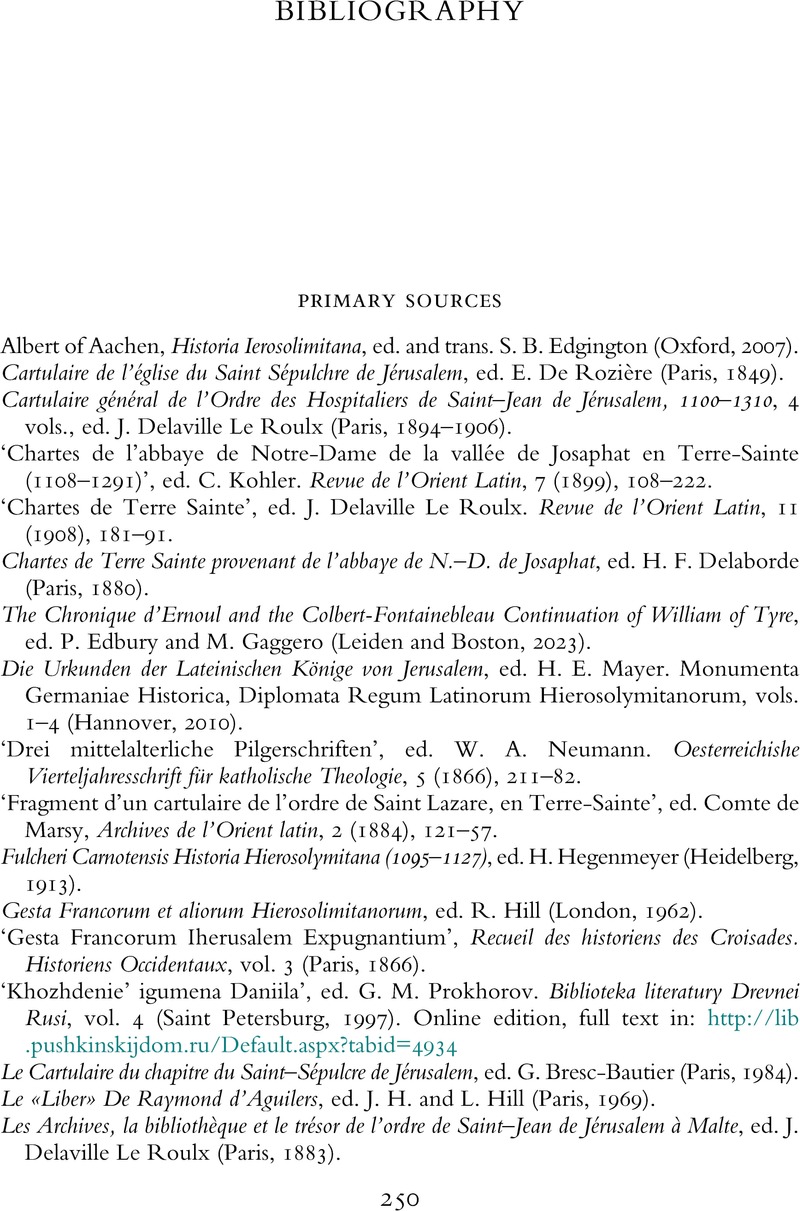Book contents
- Frankish Jerusalem
- Cambridge Studies in Medieval Life and Thought
- Frankish Jerusalem
- Copyright page
- Dedication
- Contents
- Figures, Maps and Tables
- Note on Names, Toponyms and References to Documents
- Acknowledgements
- Abbreviations
- Introduction
- Chapter 1 The Transformation of Frankish Jerusalem
- Chapter 2 The Earthly City
- Chapter 3 Jerusalem and Its Hinterland
- Chapter 4 From Depopulated and Dilapidated Town into A Capital
- Chapter 5 Continuity and Change in the Social Structures of Jerusalem in the Second Half of the Twelfth Century
- Conclusion
- Appendix Places Mentioned in the Text
- Bibliography
- Index
- References
Bibliography
Published online by Cambridge University Press: 15 February 2024
- Frankish Jerusalem
- Cambridge Studies in Medieval Life and Thought
- Frankish Jerusalem
- Copyright page
- Dedication
- Contents
- Figures, Maps and Tables
- Note on Names, Toponyms and References to Documents
- Acknowledgements
- Abbreviations
- Introduction
- Chapter 1 The Transformation of Frankish Jerusalem
- Chapter 2 The Earthly City
- Chapter 3 Jerusalem and Its Hinterland
- Chapter 4 From Depopulated and Dilapidated Town into A Capital
- Chapter 5 Continuity and Change in the Social Structures of Jerusalem in the Second Half of the Twelfth Century
- Conclusion
- Appendix Places Mentioned in the Text
- Bibliography
- Index
- References
Summary

- Type
- Chapter
- Information
- Frankish JerusalemThe Transformation of a Medieval City in the Latin East, pp. 250 - 273Publisher: Cambridge University PressPrint publication year: 2024

